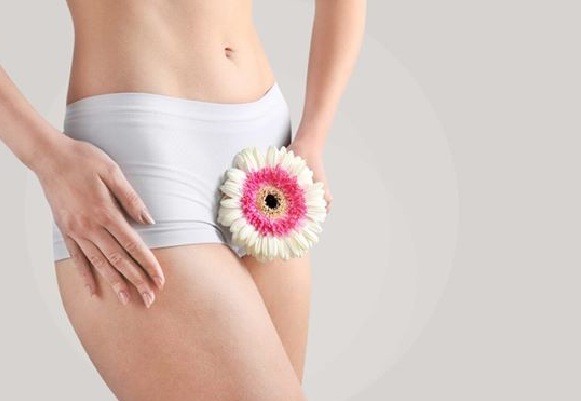What is labiaplasty?
Labiaplasty is a surgical procedure to reduce or increase the size of your labia. People usually get this procedure to reduce physical discomfort or as part of gender-affirming surgery. Sometimes, you might want it for cosmetic reasons, but there’s a wide range of normal labia. Everyone’s labia are unique and there’s no ideal or “normal” way for them to look.
Your labia are the folds of skin around your vagina opening. You have two folds of skin there. The outer folds are called the labia majora, which means large lips. These are the larger fleshy folds that protect your external genital organs. They’re covered with pubic hair after puberty. The inner folds are called the labia minora, which means small lips. These skin folds protect the opening of your urethra (where your pee leaves your body) and vagina.
During a labiaplasty and depending on why you’re having it, your surgeon either:
- Removes some tissue from your labia to reduce its size.
- Injects a filler material or fat into your labia to enlarge it.
- Reconstructs your labia from other tissue.
Iran is widely known as an ideal destination for all types of plastic and cosmetic procedures. It doesn’t come as a surprise that labiaplasty is quite common in the country. This has led to the increased experience of Iranian surgeons. What’s more, Iran enjoys fully-equipped medical centers that follow strict standards of patient care. Iran is also exceedingly affordable compared to other countries. While Labiaplasty surgery can cost up to $4000 in most regions, it only costs about $900 to $2400 in Iran. (Please note that this is simply a price range for labiaplasty in Iran. Our prices are usually somewhere near or above the average of this range given our quality of services and the expertise of our surgeons.)
Why would someone get a labiaplasty?
There are medical reasons for labiaplasty. There are also physical, cosmetic and emotional reasons. Sometimes, labiaplasty is part of gender-affirming surgery.
Medical and physical reasons
- To reduce the size of your labia minora so they don’t protrude beyond the edges of the labia majora. Excess labial tissue can twist, turn, get pinched or tugged, and cause physical discomfort and irritation during exercise, physical activities (like bike riding or jogging) and intercourse.
- To improve hygiene and health since excess tissue can make cleansing more difficult and can harbor bacteria that can cause urinary tract infections (UTIs).
Cosmetic and emotional reasons
- To reduce asymmetry (uneven shape) of the labia minora or labia majora when one side is longer or shaped differently.
- To improve comfort, confidence and sexual well-being about the appearance of your genitalia during intimate contact. Keep in mind that people have a variety of lip sizes and shapes, and there’s no labial appearance that’s considered normal.
Gender-affirming surgery
If surgery is part of a gender-affirming process, your surgeon can create labia using existing genital tissue. You may also have labiaplasty before or after other reconstruction surgeries.
What causes a labium to become oversized?
- Puberty can cause a growth spurt in your labia.
- Menopause or other hormonal changes can thin the tissue of your labia majora.
- Pregnancy and childbirth.
- Changes in your weight.
- Genetics.
What is the average age for labiaplasty?
Most people who have labiaplasty are between the ages of 18 and 50. But, since your labia may stretch during pregnancy and childbirth, you might want to wait until after you’re done adding to your family. A child may have labiaplasty, but only to correct problems related to daily function and activity.
Procedure Details
What happens before surgery?
First, you and your surgeon will discuss why you want to undergo labiaplasty. You’ll discuss your expectations and goals, as well as the risks of the surgery. They’ll conduct a psychological exam and ask about depression and anxiety.
Next, your surgeon will explain the details of your surgery, including where they’ll make the incisions and what to expect regarding changes to the size and shape of your labia.
You may undergo presurgical tests, including blood work, urinalysis and chest X-ray. Your surgical team will also give you instructions about:
- What to wear to your procedure.
- When to stop food and drink.
- When to adjust or temporarily stop certain medications.
They’ll also give you other information on how to prepare for your surgery.
 What happens on the day of surgery?
What happens on the day of surgery?
You’ll change into a surgical gown. A healthcare provider will take your vitals (temperature, pulse, blood pressure, oxygen level and breathing rate). You may have some blood work and urinalysis done again. They’ll place an intravenous line (IV) in your arm or hand, and they may place a urinary catheter in your urethra.
Next, your provider will cleanse your labia and the skin around it and shave your pubic area if needed. Then, they’ll start anesthesia. You may have IV sedation with local anesthesia or general anesthesia, depending on your procedure. Your provider will discuss which type of anesthesia is best for you during the planning stage of your surgery.
Your provider chooses the surgical technique according to how your labia (labia majora and/or labia minora) will be resized or reshaped. They usually perform this surgery with a scalpel, scissors or laser.
Reduction procedures
There are two general approaches to reducing your labia (labia minora and/or labia majora):
- Trim procedure. With this approach, your surgeon removes excess tissue from the outer edge of one or both sides of your labia minora so that they’re even with or inside the edges of your labia majora.
- Wedge procedure. With this approach, your surgeon removes a wedge or pie-shaped piece of tissue from the inner areas of one or both sides of your labia minora. They leave the submucosa intact so that the wrinkled edge of your labia remains intact after they stitch (suture) it. This retains a more natural look for your labia minora. Similarly, if you’re having surgery to reduce your labia majora, your surgeon removes an inner portion of each labium of your labia majora.
Your surgeon may have other preferred approaches depending on their surgical expertise or your desired result. You and your surgeon will work together to choose the best surgical approach to meet your goals and concerns.
What happens after labiaplasty?
After surgery, your provider removes your urinary catheter (if you have one) and you’ll become more alert as the anesthesia wears off. Your healthcare team will check to see if you’re bleeding more than expected. Before being discharged, your providers give you instructions about how to care for your wound while it heals. They’ll also discuss pain control, activity restrictions and follow-up appointments.
Risks / Benefits
What are the risks and complications of labia surgery?
Complications are infrequent, but can include:
- Removing too much tissue or not enough tissue.
- Bleeding.
- Bruising (hematoma).
- Infection.
- Wound breakdown.
- Scarring.
- Ongoing pain, pain with sex or loss of sensitivity.
Recovery and Outlook
Is labiaplasty really painful?
You’ll have some swelling, discomfort and pain, but it’s usually easy to manage with over-the-counter (OTC) medication — like acetaminophen (Tylenol®) — or with prescription medication for a day or so. If your discomfort isn’t well managed with the recommended medications, contact your surgeon. Home remedies — like a cold compress or icepack — are helpful, too. Apply an ice pack to the operative area (on top of a cloth undergarment) on a 20-minutes-on/20-minutes-off schedule to reduce pain and swelling. Most people report only mild pain or tenderness for a few days.
Your healthcare team may give you an oral antibiotic prescription or topical antibiotic to apply to your surgical wound to prevent infection.
Wear loose-fitting pants and undergarments during the healing period. Tight-fitting clothes or undergarments can cause friction against the wound and prevent or delay healing.
Will there be much bleeding?
You may have some bleeding for up to a week or so. You can wear a pad to absorb this minor bleeding.
When will results be at their very best?
The initial swelling, soreness and temporary discoloration decrease over the first couple of weeks after surgery. Most swelling is gone after six weeks. But it may take up to four to six months of healing time for swelling to completely go away before seeing the final results of your labiaplasty. There’s usually little to no scarring.
How do I wash my labia area after surgery?
Use lukewarm water only (no soap) to wash your wound. Gently wipe or dab the area dry after peeing; don’t rub the surgical area.
Your surgeon may have you take medication or recommend a diet to prevent constipation so that you don’t strain, which could stretch or break your stitches.
Follow all your provider’s post-op instructions about:
- Peeing and pooping.
- Keeping your surgical area clean and free from bacteria.
- Allowing the surgical area to heal.
When can I return to work, physical activity and sexual activity?
You should be able to return to work and other light activities after a few days. But if your job involves physical activity or lifting, you may need to stay home longer. You should avoid the following for four to six weeks or until cleared by your surgeon:
- Strenuous exercise.
- Physical activities like cycling, running and swimming.
- Sexual intimacy.
Returning to these activities too soon can put pressure on the wound, tear stitches and delay healing.
How long do the results of labiaplasty last?
Labiaplasty performed as a reduction surgery is meant to be a one-time, long-lasting procedure. Unless complications develop, you may never need this surgery again. Enhancement labiaplasty with injections of fat or fillers may need additional “touch-ups” over time.
You should know that choosing to have children after your procedure may affect your labiaplasty. Many people choose to wait to have their labiaplasty until after they’ve completed their families.
























